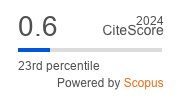Sinus node dysfunction in patients with long-standing persistent atrial fibrillation: Clinical and laboratory parallels
https://doi.org/10.29001/2073-8552-2021-36-1-123-128
Abstract
Introduction. This article provides an overview of the problem of sinus node dysfunction after surgical treatment for longstanding persistent atrial fibrillation and the methods for diagnosing the initial states of cardiac activity and conduction.
Purpose. To identify predictors of initial sinus node dysfunction in patients with long-standing persistent atrial fibrillation.
Material and Methods: The study comprised a total of 65 patients with long-standing persistent atrial fibrillation complicating mitral valve disease. The state of autonomic nervous system was analyzed in patients with long-standing persistent atrial fibrillation. The associations between the analyzed data and electrophysiological parameters were investigated.
Results. The study allowed to identify the cutoff points for the contents of neurohumoral factors in the coronary circulation in patients with intact sinus node function and sinus node dysfunction. Prognostic criteria for the development of bradyarrhythmias in the postoperative period requiring pacemaker implantation were proposed and introduced into clinical practice.
Keywords
About the Authors
V. V. EvtushenkoRussian Federation
Cand. Sci. (Med.), Cardiovascular Surgeon, Cardiac Surgery Department No. 1
111a, Kievskaya str., Tomsk, 634012, Russian Federation
A. V. Evtushenko
Russian Federation
Dr. Sci. (Med.), Professor, Head of the Laboratory of Heart Diseases
6, Sosnoviy blvd., Kemerovo, 650002, Russian Federation
E. N. Pavlyukova
Russian Federation
Dr. Sci. (Med.), Professor, Head of the Department of Atherosclerosis and Coronary Artery Disease
111a, Kievskaya str., Tomsk, 634012, Russian Federation
T. E. Suslova
Russian Federation
Cand. Sci. (Med.), Leading Research Scientist, Department of Functional and Laboratory Diagnostics
111a, Kievskaya str., Tomsk, 634012, Russian Federation
A. M. Gusakova
Russian Federation
Cand. Sci. (Pharm), Research Scientist, Department of Functional and Laboratory Diagnostics
111a, Kievskaya str., Tomsk, 634012, Russian Federation
A. N. Zhilina
Russian Federation
Research Assistant
111a, Kievskaya str., Tomsk, 634012, Russian Federation
I. O. Kurlov
Russian Federation
Cand. Sci. (Med.), Senior Research Scientist, Department of Interventional Arrhythmology
111a, Kievskaya str., Tomsk, 634012, Russian Federation
S. V. Popov
Russian Federation
Dr. Sci. (Med.), Professor, Academician of the Russian Academy of Sciences, Director, Head of the Department of Interventional Arrhythmology
111a, Kievskaya str., Tomsk, 634012, Russian Federation
References
1. Melo J.Q., Neves J., Adragão P., Ribeiras R., Ferreira M.M., Bruges L. et al. When and how to report results of surgery on atrial fibrillation. Eur. J. Cardiothorac. Surg. 1997;12(5):739–744. DOI: 10.1016/s1010-7940(97)00252-2.
2. Greenberg J.W., Lancaster T.S., Schuessler R.B., Melby S.J. Postoperative atrial fibrillation following cardiac surgery: a persistent complication. Eur. J. Cardiothorac. Surg. 2017;52(4):665–672. DOI: 10.1093/ejcts/ezx039.
3. Evtushenko A.V., Evtushenko V.V., Petlin K.A., Smyshlyaev K.A., Vaizov V.Kh. et al. Prognosis for recovery of sinus node function in patients after long-standing persistent atrial fibrillation surgery. The Siberian Journal of Clinical and Experimental Medicine. 2014;29(3):73–80 (In Russ.). DOI: 10.29001/2073-8552-2014-29-3-73-80.
4. Evtushenko V.V., Makogonchuk I.S., Evtushenko A.V. Rules and principles of patient selection for surgical treatment of acquired heart diseases complicated by atrial fibrillations. The Siberian Journal of Clinical and Experimental Medicine. 2017;32(3):29–34 (In Russ.). DOI: 10.29001/2073-8552-2017-32-3-29-34.
5. Pecha S., Hakmi S., Subbotina I., Willems S., Reichenspurner H., Wagner F.M. Concomitant surgical ablation for atrial fibrillation (AF) in patients with significant atrial dilation >55 mm. Worth the effort? J. Cardiothorac. Surg. 2015;10:165. DOI: 10.1186/s13019-015-0337-3.
6. Cox J.L., Schuessler B.R., D’Agostino J.H. Jr., Stone C.M., Chang B.C., Cain M.E. et al. The surgical treatment of atrial fibrillation III. Development of a definitive surgical procedure. J. Thorac. Cardiovasc. Surg.1991;101(4):569–583.
7. Ferrer M.I. The sick sinus syndrome. New York: Futura Publishing Company; 1974.
8. Hudson R.E.B. Cardiovascular pathology. London: Edward Arnold; 1965.
9. Lippestad C.T., Marton P.F. Sinus arrest in proximal right coronary artery occlusion. Am. Heart J. 1967;74(4):551–556. DOI: 10.1016/0002-8703(67)90015-4.
10. Kezerashvili A., Krumerman A.K., Fisher J.D. Sinus node dysfunction in atrial fibrillation: Cause or effect? J. Atr. Fibrillation. 2008;1(3):30. DOI: 10.4022/jafib.30.
11. Waris E., Kreus K.E., Salokannel J. Factors influencing persistence of sinus rhythm after DC shock treatment of atrial fibrillation. Acta Med. Scand. 1971;189(3):161–166. DOI: 10.1111/j.0954-6820.1971.tb04358.x.
Review
For citations:
Evtushenko V.V., Evtushenko A.V., Pavlyukova E.N., Suslova T.E., Gusakova A.M., Zhilina A.N., Kurlov I.O., Popov S.V. Sinus node dysfunction in patients with long-standing persistent atrial fibrillation: Clinical and laboratory parallels. Siberian Journal of Clinical and Experimental Medicine. 2021;36(1):123-128. (In Russ.) https://doi.org/10.29001/2073-8552-2021-36-1-123-128





.png)





























